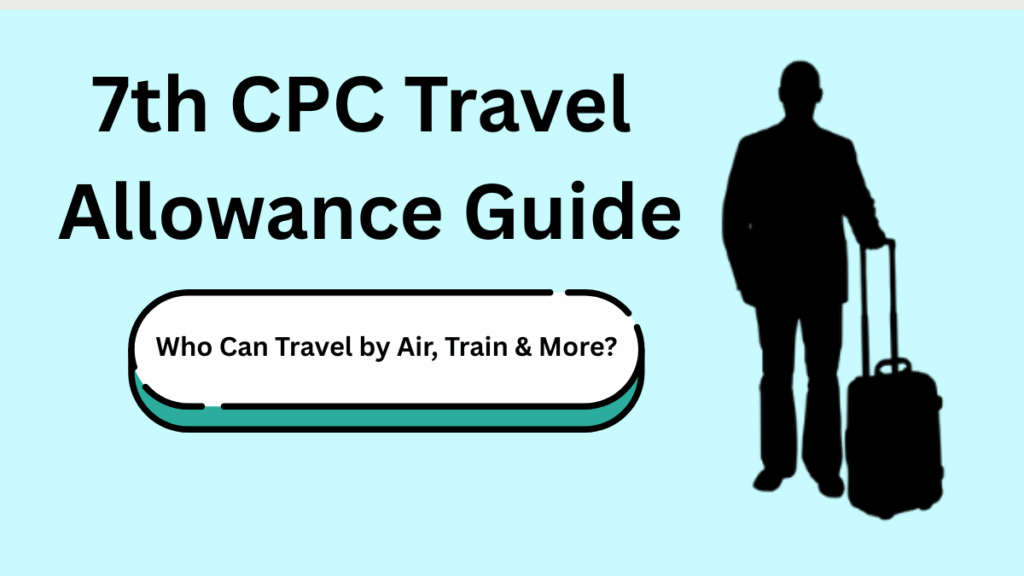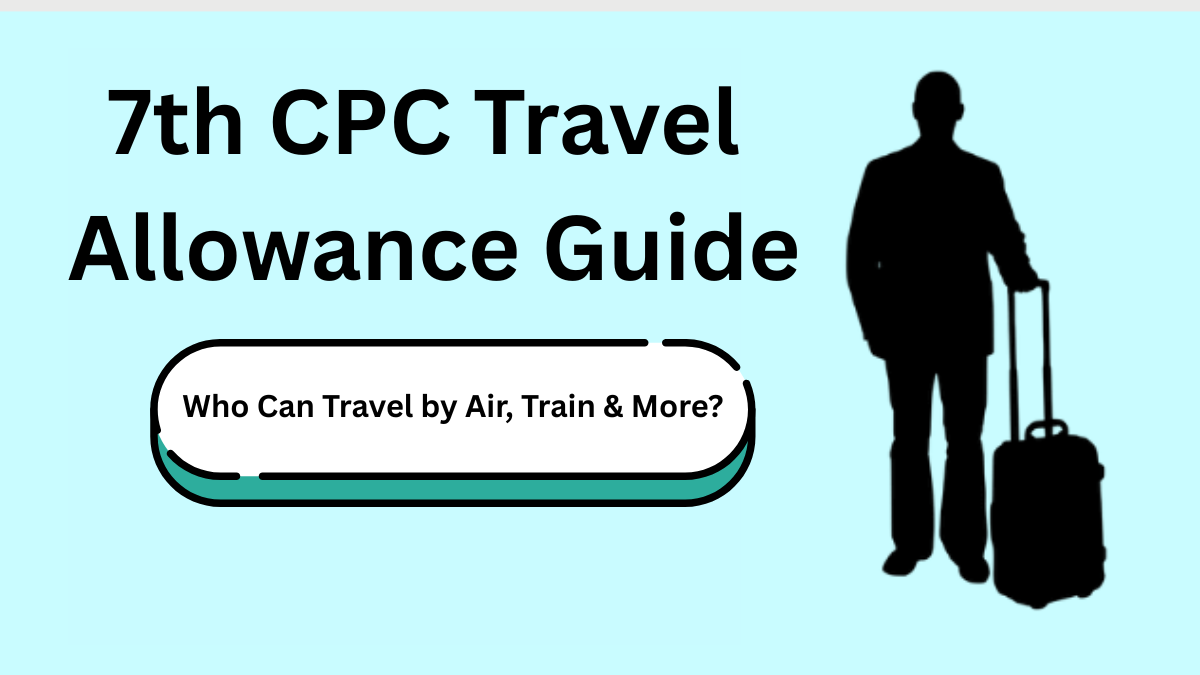Travel allowance is an essential component of government employees’ benefits, ensuring smooth official journeys without financial strain. Under the 7th CPC Travel Allowance Entitlement, the rules clearly define who can travel by air, train, or other modes — depending on their Pay Level-wise Travel Reimbursement eligibility.
Let’s break it down in simple terms so you know exactly what’s covered and how to make the most of it.

Understanding the 7th CPC Travel Allowance
The 7th Central Pay Commission (CPC) introduced a structured travel allowance system to ensure fair and transparent reimbursements for government employees. Your entitlement is determined by:
-
Pay level in the 7th CPC pay matrix
-
Nature and purpose of travel (official tours, training, transfer, or LTC)
-
Destination and distance
The aim is to standardise travel benefits and avoid confusion over claims and reimbursements.
Pay Level-wise Travel Reimbursement Chart
Here’s a quick reference table to understand the Pay Level-wise Travel Reimbursement eligibility under the 7th CPC:
| Pay Level (as per 7th CPC) | Entitled Mode of Travel | Accommodation Eligibility |
|---|---|---|
| Level 14 and above | Air travel (Business Class) | 5-star hotel or equivalent |
| Level 12–13 | Air travel (Economy Class) | 4-star hotel or equivalent |
| Level 9–11 | Air travel (Economy Class for certain destinations) / AC 2-Tier train | 3-star hotel or equivalent |
| Level 6–8 | AC 2-Tier train travel | Budget hotels / State-run guesthouses |
| Level 1–5 | AC 3-Tier train travel | State guest houses / modest accommodation |
Who Can Travel by Air?
Air travel under the 7th CPC Travel Allowance Entitlement is allowed for:
-
Employees in Pay Level 9 and above for specific destinations (especially remote or North-East areas)
-
All officers in Pay Level 12 and above for official tours, irrespective of destination
-
Situations where travel time by train exceeds the set limits prescribed by government guidelines
Train Travel Eligibility
Rail travel remains the most common mode for government employees, with entitlements based on pay level:
-
AC 2-Tier for Level 6 and above
-
AC 3-Tier for Level 1–5 employees
-
Sleeper or Second Class travel in specific cases, such as journeys under short distances
Special Cases in Travel Allowance
There are unique cases where the travel allowance rules become more flexible:
-
Emergency travel for official duties may allow higher class travel if approved
-
Travel to remote locations (e.g., Jammu & Kashmir, Andaman & Nicobar Islands, North-East) often includes air fare eligibility even for lower pay levels
-
Transfer duty may include transportation of personal effects and family travel
How to Claim Your Travel Reimbursement
To make sure your Pay Level-wise Travel Reimbursement claim is smooth:
-
Keep original tickets, boarding passes, and receipts
-
Submit claims within the prescribed time limit
-
Follow your department’s travel sanction rules before booking
-
Ensure mode and class of travel match your entitlement
FAQs on 7th CPC Travel Allowance
Q1. What is the 7th CPC Travel Allowance Entitlement?
It refers to the travel benefits and reimbursements government employees can claim for official tours, transfers, training, or LTC, based on their pay level.
Q2. Can all government employees travel by air?
No. Air travel eligibility depends on your pay level and destination. Higher levels have wider air travel entitlements, while lower levels may get air travel only for certain locations.
Q3. How is Pay Level-wise Travel Reimbursement calculated?
It’s calculated based on your entitled mode of travel, distance, and actual expenses incurred, subject to government-approved limits.
Q4. Do I need prior approval for travel claims?
Yes. Most official travel requires prior sanction to ensure your journey falls within entitlement rules and is eligible for reimbursement.
Click here to learn more
